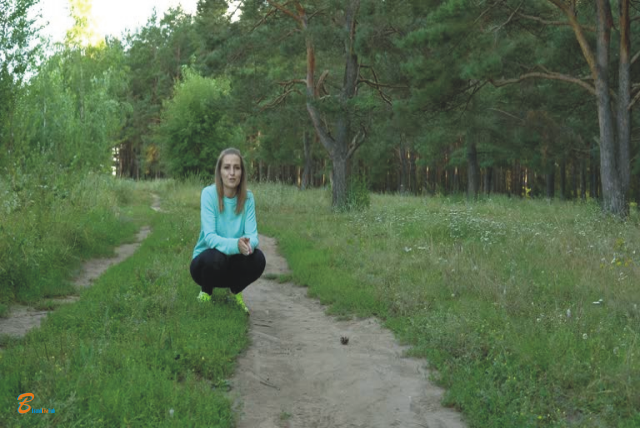Exploring Tiny Home Construction | Trends 2024
Contents
- 1 Introduction to Tiny Homes
- 1.1 Benefits of Tiny Home Living
- 1.2 Design Considerations for Tiny Homes
- 1.3 Cost Analysis of Tiny Home Construction
- 1.4 Legal and Zoning Considerations
- 1.5 Sustainable Practices in Tiny Home Building
- 1.6 DIY vs. Professional Construction: Pros and Cons
- 1.7 Creative Space-Saving Solutions
- 1.8 Case Studies: Inspiring Tiny Home Projects
Introduction to Tiny Homes
Exploring Tiny Home Construction delves into the intricacies of building small, efficient dwellings. In this exploration, attention is given to the planning, design, and construction of diminutive residences. The phenomenon of tiny homes has garnered widespread interest in recent years. This interest prompts individuals to seek innovative solutions for sustainable and minimalist living.
Through careful examination of materials, layout, and spatial enhancement, the process of crafting these compact habitats unfolds. Explores the intricacies of building tiny houses. This research focuses on the planning, design and construction of low-rise dwellings. The tiny house trend has gained widespread interest in recent years. People are finding innovative solutions for sustainable and minimalist living. Guide you through the process of creating these compact dwellings, through careful examination of materials, layout, and spatial optimization.
- Benefits of Tiny Home Living
- Design Considerations for Tiny Homes
- Cost Analysis of Tiny Home Construction
- Legal and Zoning Considerations
- Legal and Zoning Considerations
- Sustainable Practices in Tiny Home Building
- DIY vs. Professional Construction: Pros and Cons
- Creative Space-Saving Solutions
- Case Studies: Inspiring Tiny Home Projects
Benefits of Tiny Home Living
Here are the details on the benefits of tiny home living:
- Affordability: Lower cost of construction and maintenance.
- Sustainability: Reduced environmental footprint due to smaller size.
- Mobility: Easier to move and explore different areas.
- Simplified Lifestyle: Less clutter and emphasis on what truly matters.
- Energy Efficiency: Lower energy consumption for heating and cooling.
- Minimalist Living: Encourages a decluttered and intentional lifestyle.
- Financial Freedom: Reduced expenses allow for savings or pursuing passions.
- Customization: Personalize your living space to fit your needs perfectly.
- Connection to Nature: Often designed to maximize outdoor living space.
- Community: Opportunity to foster strong relationships in tight-knit communities.
Design Considerations for Tiny Homes
Considerations for Designing Tiny Homes:
- Space Improvement: Maximize functionality in minimal square footage.
- Multi-Functional Furniture: Use convertible or collapsible furniture to save space.
- Storage Solutions: Incorporate creative storage options to reduce clutter.
- Natural Light: Design with large windows and skylights to enhance brightness.
- Flexible Layouts: Plan for adaptable spaces that can serve multiple purposes.
- Efficient Use of Vertical Space: Use loft areas or tall ceilings for extra room.
- Compact Appliances: Choose appliances scaled to fit the smaller living space.
- Indoor-Outdoor Flow: Design for seamless transitions between indoor and outdoor areas.
- Modular Construction: Consider modular components for ease of assembly and customization.
- Personalization: Tailor the design to show the preferences and lifestyle of the occupant.
- Construction Materials and Techniques
Cost Analysis of Tiny Home Construction
Analysis of Tiny Home Construction Costs:
- First Investment: Consider the cost of land, permits, and the structure itself.
- Construction Materials: Assess the expenses for building materials, like lumber, insulation, roofing, and siding.
- Labor Costs: Account for the cost of hiring contractors or the value of personal time if building DIY.
- Utilities: Estimate expenses for connecting to utilities or investing in off-grid systems like solar panels.
- Interior Finishes: Budget for fixtures, appliances, flooring, cabinetry, and other interior elements.
- Transportation: If purchasing a pre-built tiny home, factor in delivery or relocation costs.
- Maintenance: Plan for ongoing maintenance and repairs to guarantee longevity.
- Financing: Explore financing options, including loans or personal savings, and calculate associated interest costs.
Legal and Zoning Considerations
Considerations for Legal and Zoning Compliance:
- Zoning Regulations: Research local zoning laws to guarantee tiny homes are permitted in the intended location.
- Lowest Square Footage Requirements: Check if there are smallest size restrictions for dwellings in the area.
- Building Codes: Familiarize yourself with building codes and standards applicable to tiny homes.
- Land Use Restrictions: Find any restrictions on the use of land, like residential-only zoning.
- Permitting Process: Understand the process for obtaining necessary permits for construction and occupancy.
- Utility Connections: Verify requirements for connecting to utilities like water, sewage, and electricity.
- Off-Grid Living Regulations: If planning to live off-grid, investigate regulations governing self-reliant systems.
- Community Regulations: If residing in a community or homeowners association, review any specific rules or covenants related to tiny homes.
- Setback Requirements: Make certain compliance with setback regulations dictating distance from property lines and other structures.
- Accessibility Standards: Consider accessibility requirements, especially if the building for aging in place or accommodating disabilities.
Sustainable Practices in Tiny Home Building
Sustainable Practices in Tiny Home Building:
- Eco-Friendly Materials: Choose renewable, recycled, or low-impact materials for construction.
- Energy Efficiency: Incorporate passive design strategies and energy-efficient appliances to reduce energy consumption.
- Off-Grid Options: Implement off-grid systems like solar panels, rainwater harvesting, and composting toilets to reduce reliance on traditional utilities.
- Small Footprint: Design compact layouts and use vertical space to reduce environmental impact and preserve natural surroundings.
- Durability: Select durable materials and construction techniques. This increases the longevity of the home. It also reduces the need for frequent repairs or replacements.
- Minimalist Lifestyle: Promote a lifestyle focused on essentials and conscious consumption to reduce waste and environmental footprint.
- Site Choice: Opt for sites that reduce environmental disruption and maximize natural resources like sunlight and wind for energy generation.
- Sustainable Transport: Consider transportation emissions when selecting materials and transporting components to the building site.
- Waste Reduction: Implement strategies to reduce construction waste, like salvaging materials, recycling, and proper disposal.
- Community Engagement: Foster a sense of community and shared resources to support sustainable living practices and resilience.
DIY vs. Professional Construction: Pros and Cons
DIY Construction:
Pros:
- Cost Savings: Can save money on labor costs by doing the work yourself.
- Creative Control: Have full control over the design and construction process.
- Learning Experience: Gain valuable skills and knowledge through hands-on experience.
- Personal Satisfaction: Enjoy the sense of accomplishment from building your own home.
- Flexibility: Can work on the project at your own pace and schedule.
Cons:
- Time-Consuming: DIY construction often takes longer than professional construction due to learning curves and limited availability.
- Skill Need: Requires a certain level of skill and knowledge in various trades, which may be challenging for beginners.
- Quality Concerns: Without professional training, there may be concerns about the quality and safety of the construction.
- Legal Compliance: Must guarantee compliance with building codes and regulations, which can be complex and time-consuming.
- Risk of Errors: Higher risk of mistakes and rework, which can lead to extra costs and delays.
Professional Construction:
Pros:
- Skill: Gain from the skill and experience of professional contractors and tradespeople.
- Efficiency: Professional construction is faster due to streamlined processes. It is also more efficient because of access to specialized tools and equipment.
- Quality Assurance: Guarantee high-quality construction and compliance with building codes and regulations.
- Reduced Stress: Avoid the stress and hassle of managing the construction process yourself.
- Warranty Coverage: Get warranty coverage for the workmanship and materials used in the construction.
Cons:
- Higher Cost: Professional construction typically comes with higher labor costs compared to DIY.
- Limited Control: Have less control over the design and construction process, as decisions are often made by the contractor.
- Less Personalization: There may be limited customization options compared to DIY construction.
- Communication Challenges: Miscommunication between the homeowner and contractor can lead to dissatisfaction with the final result.
- Dependency: Depends on the contractor’s schedule and availability, which result in delays.
Creative Space-Saving Solutions
- Loft Beds: Use vertical space by incorporating loft beds, allowing for extra living or storage space underneath.
- Murphy Beds: Install fold-down Murphy beds. They can be tucked away when not in use. This frees up floor space during the day.
- Built-In Storage: Maximize storage with built-in shelves, cabinets, and drawers, utilizing every available inch of space.
- Multi-Functional Furniture: Invest in furniture with dual purposes. Examples include a sofa bed, a dining table with storage, or ottomans with hidden compartments.
- Sliding Doors: Opt for sliding doors instead of traditional swinging doors to save space and create a more open layout.
- Fold-Down Tables: Install fold-down dining or work tables that can be collapsed against the wall when not needed.
- Wall-Mounted Desks: Create a workspace with wall-mounted desks that can be folded up when not in use.
- Nesting Furniture: Use nesting tables or chairs that can be stacked together to save space when not in use.
- Under-Stair Storage: Take advantage of under-stair space for built-in storage solutions like drawers or closets.
- Floating Shelves: Install floating shelves to show items and free up floor space, particularly in smaller rooms or corridors.
Case Studies: Inspiring Tiny Home Projects
- The Tiny Traveling Dream Home: A couple transformed a vintage Midstream trailer. They created a stylish and functional tiny home on wheels. This setup allows them to travel while enjoying the comforts of home.
- The Minim House: Designed by Brian Levy, this 210-square-foot tiny home features innovative space-saving solutions. It includes a retractable bed and a convertible dining area. These features maximize usability in a compact footprint.
- The Hikari Box: Built by minimalist architecture firm Shelter Wise, this 184-square-foot tiny home is in Portland, Oregon. It showcases efficient design and sustainable materials. Large windows offer ample natural light and a sense of spaciousness.
- The Tiny Tack House: A couple in Washington State constructed this 140-square-foot tiny home. It features a cozy yet functional interior. The custom-built furniture maximizes storage and comfort in a small space.
- The Escape Vista: This sleek and modern tiny home on wheels offers panoramic views. It includes luxurious amenities, like a full kitchen, bathroom, and sleeping loft. This makes it an ideal retreat for off-grid living or vacationing.
- The NestPod: Designed by Tiny House Scotland, this compact modular home is built with sustainable materials. It features a flexible layout that can adapt to various living needs. These needs range from single occupancy to small families.
- The Ecocapsule: A self-sustainable micro-home designed for off-grid living. The Ecocapsule integrates solar panels, wind turbines, and rainwater harvesting. It provides all necessary utilities in a compact and portable design.
- The Tiny Project: Built by minimalist blogger Alek Lisefski, this 160-square-foot tiny home features a modern design. It has high-quality finishes and custom-built furniture. This demonstrates that small spaces can be both functional and aesthetically pleasing.
- The Treehouse: A whimsical tiny home nestled among the trees. It features a cozy interior with rustic charm. It offers panoramic views of the surrounding forest. This provides an immersive nature retreat experience.
- The Tiny House Community: Various projects around the world showcase the concept of tiny house communities. In these communities, individuals come together to share resources. They support sustainable living practices and foster a sense of community while living in small, efficient homes.
Conclusion:
These diminutive dwellings offer a multitude of benefits. This becomes clear as the exploration of tiny home construction comes to a close. They range from affordability and sustainability to flexibility and community engagement. Individuals can carefully consider the design, materials, and legal regulations. They can create functional and comfortable homes. These homes show the individual’s lifestyles and values.
From innovative space-saving solutions come inspiring case studies. The tiny house movement inspires creativity, sustainability, and a reimagining of traditional housing models. You can embark on a DIY construction journey. Alternatively, you might enlist the skills of professional builders. Either way, the path toward tiny home living promises a rewarding and fulfilling experience.
Interest in tiny homes is increasing. This growth expands the potential for fostering resilient communities. It also promotes environmental stewardship. Furthermore, it encourages embracing a simpler, more intentional way of living. With creativity and ingenuity, people can shape the future of tiny home construction. By committing to sustainable practices, they create a bright future for this industry. This approach offers a path toward a more sustainable and fulfilling way of life for individuals and communities alike.










One Comment